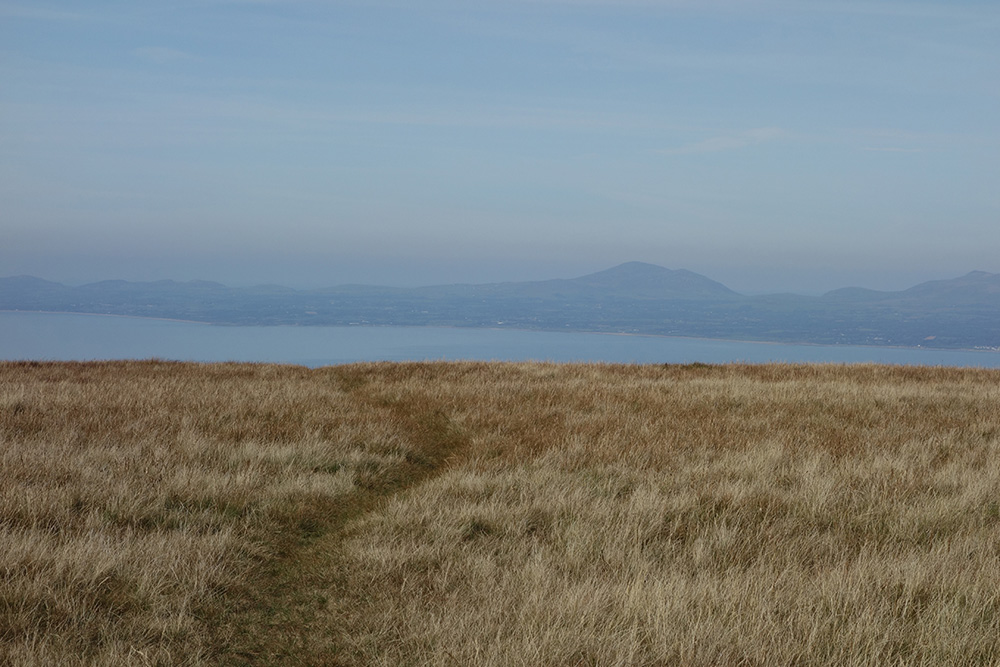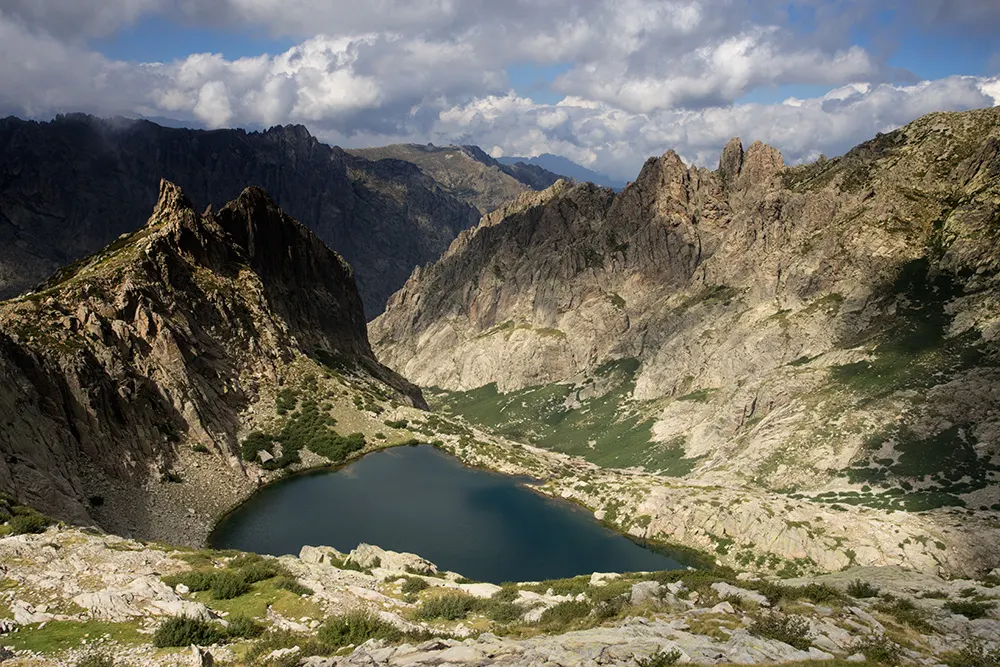
May 18th 2025
Introduction
After returning from Corsica a few years ago, I went to Snowdonia and climbed a small hill called Moelfre. Pronounced Mel-vree, which you see in the photograph.
The peace was memorable. Finally in a quiet, beautiful, easy place, relaxing in sunshine. Silence.
There are different kinds of hill, mountain, and countryside walking, which is one of the themes of this Footnotes.
I will technically explain the kind of photography I practice, although it’s more than a technical pursuit. To borrow words from Rob Macfarlane it means “something much more like pilgrimage – in which process and journey supersede destination” (Masters of Landscape Photography, 2017).
I like that path on Moelfre. Unnecessary, but it’s there. Almost unseen, but look carefully and you notice.
Walking Photography
I spoke about this for another Footnotes in a context of hiking. Describing Corsica, as an attractive but gruelling walk. What I didn’t do was mention the photography, which needs a separate discussion.
There’s a difference between static photography when you set up a tripod, frame the view, and watch the light, compared to the walking experience. You have a defined destination for the first, researched before you arrive. There’s an unknown process for the second, which is what matters.
Technically, you carry less gear and no tripod although this depends where your interest lies. If you’re walking for photography as such, and can manage the weight, you carry the same gear. If you’re walking because you like to walk, you confine the load accordingly.
You don’t have time to set up a tripod and wait a few hours on a trip of multiple days. There might be refuge dinner at seven, you have to pace yourself, and rain is arriving you want to avoid.
The constraints are different. You have some time for a shot, maybe 10 or 20 minutes. Not the leisurely viewing, when a photograph is the objective after researching a viewpoint. Your gear will be minimal alongside the weight of food, tent, clothes, water, cooking fuel and sleeping bag.
It was in that context I took this shot of Corsican mountains.

I waited 15 minutes for a clear view, knowing that was about the limit. I needed to reach the next hut for eating and camping.
Generally speaking, unless you are using selective focus (depth of field) you want a small aperture but reasonable shutter speed for a hand held shot. This is balanced with the ISO which again is better (for quality) the lower it is. You evaluate these factors in relation to backpacking not perfection. However there’s another part of this equation which serves as a photographic tip.
If possible, rest or brace your camera on a rock, against a tree or similar. Rest yourself against a tree or rock to stabilise your posture, which translates into a steady camera and pressing the shutter button lightly. You can’t see it, but that’s what I did with this shot. There was a flat area of rock where I rested my camera and a moment of light occurred when the cloud cleared away.
Walking Themes
Some years ago I was setting off in the Spanish Pyrenees and noticed a sign for a path. It was a route taken by people fleeing the Civil War and Franco. There are several. I thought I might return, and walk one of them, but decided mountain beauty is my walking objective which means history is a secondary abstraction.
It can however be a walking framework, depending on interests, and here for example is an account of Nietzsche’s walking. I’ve read a little about that, and he had a feeling for it, which is why Zarathustra retreats to the mountains.
Although I wouldn’t do it myself, the Camino de Santiago is a popular route if you like the idea of pilgrimage. I’m not convinced. There is no significance to such a walk except in imagination, which can be achieved with a book. Hills and mountains are another matter, because of geography not fancy. You don’t create them: they are dramatically and materially there.
Featured Walks
The Karakorum mountains are one of those adventures I’ll probably never have, because of the expense and travelling effort. The cost of it is enough for two or three trips to Europe where there is plenty to see if not quite on the same scale. Although I see the attraction. If there weren’t other considerations, it would be a hiking dream.
Where do you begin, if you are thinking about it? Here’s a tip. You can look at organised trips such as this one as a starting point for a route, where to sleep, and what the attractions are. Cicerone are often my first thought for books because they are usually good. Here’s one for the Karakorum. Here’s a very enticing video and some details about an independent although shorter walk.
India however launched air strikes on Pakistan after a terrorist attack. A response to yet another atrocity, for which there are escalation concerns. The BBC was writing about World War Three. That depends on alliances although we seem on the edge of it, mixed up at home and connected across the world with friend, foe, and psychopath. UK police also made more terrorism arrests, this time Iran related, targeting the Israeli Embassy.
Not far from that London location you could enjoy Kensington Gardens, then Green Park, Saint James’s Park, and finish with National Gallery wonders. I would do such things if I still lived in London.
Life continues normally, that’s the point I’m making, with walking nearby.
This might be true elsewhere, a safe detachment from danger, so is a Karakorum trip advisable? Probably not. Walking advice is sometimes changeable not static. This applied for me in the Pyrenees after a path was closed because of rockfall. It meant a significant change of route, leaving the HRP for a temporary sojourn in the GR10.
Back at home, escaping the news, it’s worth remembering the Wainwright coast to coast walk. Several times I’ve been asked is that what I was doing, when I wanted somewhere to sleep, and I spoke to people doing it at this camp site. They confirmed what I said, that the best part is in the Lake District.
That’s a good camp site to know about but if it’s cold (on one occasion it was) note that the water pipes will be frozen. Note too, if it’s nine or ten on a silent winter night, and a neighbour opens the back of his car blasting out Doctor Hook like he’s on a romantic date, the farmer will have none of it.
Conclusion
After covering big ideas, condensing them into something minimal, where do you finish? To weave this together I’ll use these words, connected to parts of the above, from Rob Macfarlane again:
| Most of us exist for most of the time in worlds which are humanly arranged, themed and controlled. One forgets that there are environments which do not respond to the flick of a switch or the twist of a dial, and which have their own rhythms and orders of existence. Mountains correct this amnesia.
– Mountains of the Mind |
